Lake Life In Tennessee
One of the first things you’ll hear about living in Tennessee is that there is an abundance of outdoor activities available, and one of the most intriguing is definitely the amazing lake life. Check out some of the best places to live in Tennessee on a Lake.
Whether you’re looking for fishing, boating, water sports (grab your tube, canoe, wave runner, or jet ski), or just looking to relax by the water and take in a gorgeous sunset, Tennessee is widely acclaimed as one of the greatest places to live in all of the United States! With miles of shorelines (along either lakes or rivers) throughout the state, there is plenty of lakefront property available to enjoy the lake life.
One major thing you will need to know about the water in Tennessee is that the great majority of it is managed by the “Army Corp Of Engineers”. Due to the fact that the state of Tennessee gets a lot of rain, and many of our wonderful lakes are man-made, “The Corp” works tirelessly to properly manage the flow of water from all of the various reservoirs and catch basins in order to ensure the best quality water for the abundance of fish, wildlife, and recreation that drives people to visit the Volunteer State!
When looking at the property along any body of water in Tennessee, you will see property line markers to indicate where The Corp takes over management of the land in order to preserve all of our amazing lake life benefits. One big thing you will notice (with any non-private lake) is that there are no docks in the water and that the storage of boats and other recreational water vehicles is left to local marinas.
The marinas are all privately-owned & managed businesses, and work with the Army Corp of Engineers and the state of Tennessee to comply with all local regulations to keep our water fresh, clean, and safe. Along with the marinas, you will also notice that Tennessee has an abundance of state parks to enjoy, and they also fall under the regulations set forth by the Army Corp Of Engineers.
Cost Of Lake House In Tennessee
For those of you considering purchasing a lake house in Tennessee, you’re likely wondering about the cost of a “lake home” vs. a regular place. In general, the cost of living in Tennessee is one of the lowest in the entire country.
Unfortunately, because there are so many preferences and considerations when choosing a home, there’s no simple way to share the cost of a lake house in Tennessee.
However, we do have a team of real estate professionals available to help you narrow down some options based on specific criteria that you have for your home search, and we’d love to help walk you through that process.
Best Place To Buy A Lake House In Tennessee
It can definitely be hard to choose since there are so many lakes to live on in Tennessee! When deciding on what is best for you and your family, you need to decide what is most important to you and what sort of community you’d like to be in.
Are you looking for lots of live country music? Check out the lakes in the Nashville area.
Looking for mountain living? Check out the lakes in the Smokey Mountain region of East Tennessee.
Are you looking for beautiful rolling hills? Check out any lake in middle Tennessee.
In general, you will obviously pay more for real estate if you end up close to any of the amazing lakes that Tennessee has to offer, but regardless of which area you choose, you’ll have plenty of access to live entertainment, good food, state parks, outdoor activities, and everything else that has drawn you to want to live in Tennessee. There are many lake houses available in Tennessee, and regardless of which one you choose, you will enjoy your newfound lake life!
Best Lakes In Tennessee
Boone Lake
Located in East Tennessee (Johnson City), and completed in 1952, Boone Lake is found on the South Fork of the Holston River. At 4520 acres, it’s a relatively small lake, largely known for its bass and catfish.
Center Hill Lake
Covering over 18,220 acres of land, Center Hill Lake is one of the four flood control reservoirs in the Upper Cumberland region of Tennessee. It is a reservoir constructed by the Army Corps of Engineers in 1948 and provides electricity and flood control.
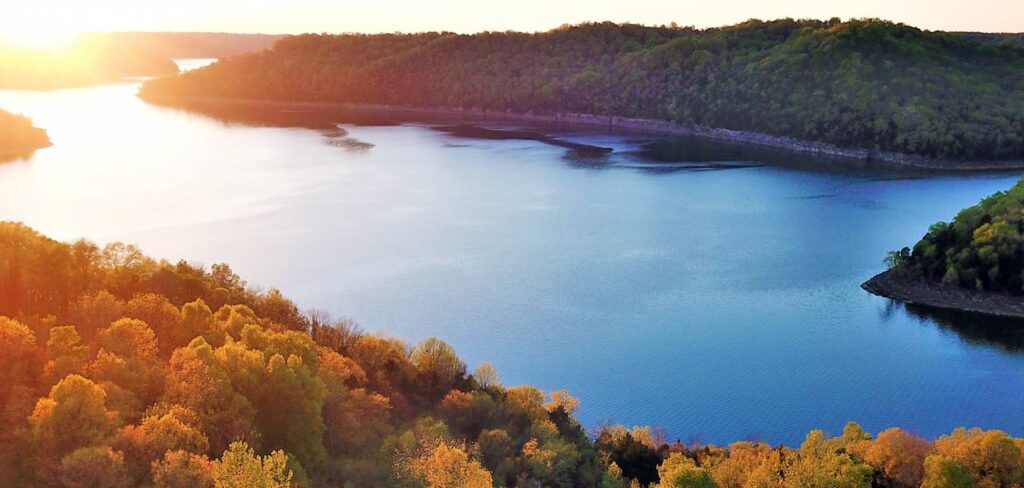
Cherokee Lake
Also known as Cherokee Reservoir, this lake was formed in the early 1940s when the Tennessee Valley Authority purchased the property from nearby landowners in exchange for flood control and electricity. Covering almost 29,000 acres, this lake has recently transitioned from a functional source of electricity to a popular tourist destination with state and public parks, boat docks, lakefront resorts, and campgrounds.
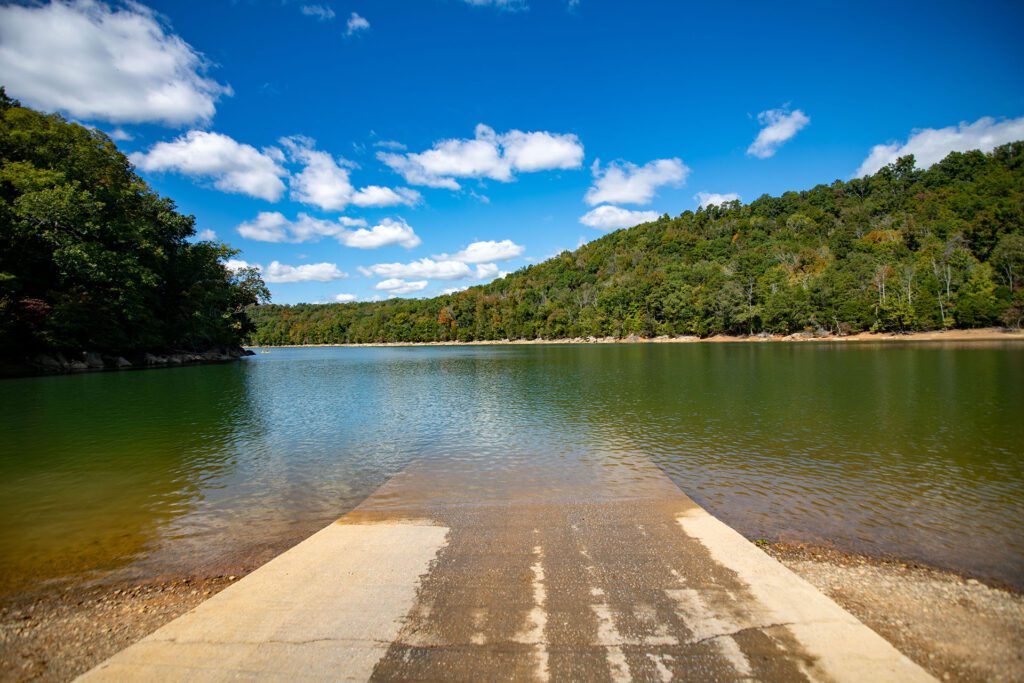
Chickamauga Lake
Located just outside of Chattanooga, Chickamauga Lake is located along the Tennessee River and covers over 36,000 acres of land! The maximum depth of this lake is 72 feet, and has become a popular destination for fishing, specifically largemouth and smallmouth bass, as well as catfish, and is home to various fishing tournaments. You can find Chickamauga Lake directly in between Watts Bar Lake (to its north) and Nickajack Lake (to its south).
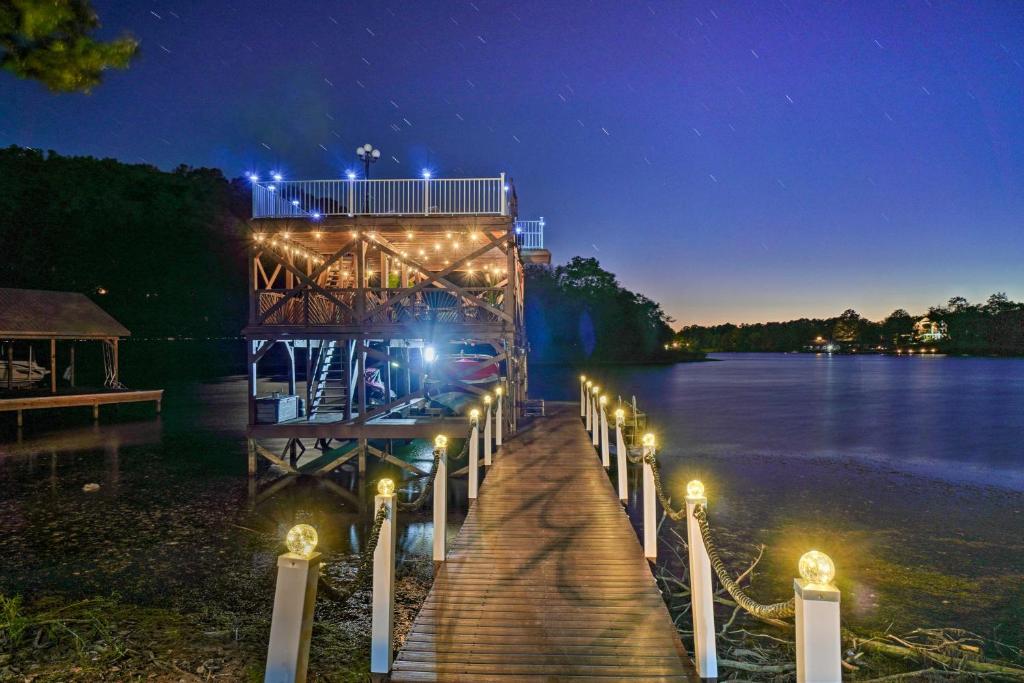
Cordell Hull Lake
One of the smaller lakes in Tennessee (12,000 acres), Cordell Hull Lake was built in the 1960s and named after the former United States Secretary of State. Originally made for navigation, power, and recreation, this lake sits approximately 40 miles east of Nashville and is part of the Cumberland River (nearest the city of Carthage).
Known for numerous outdoor activities, Cordell Hull Lake has ample opportunities for fishing, boating, camping (Defeated Creek Campground and Salt Lick Creek Campground), picnics, hiking, wildlife viewing, and bike or horse trails.
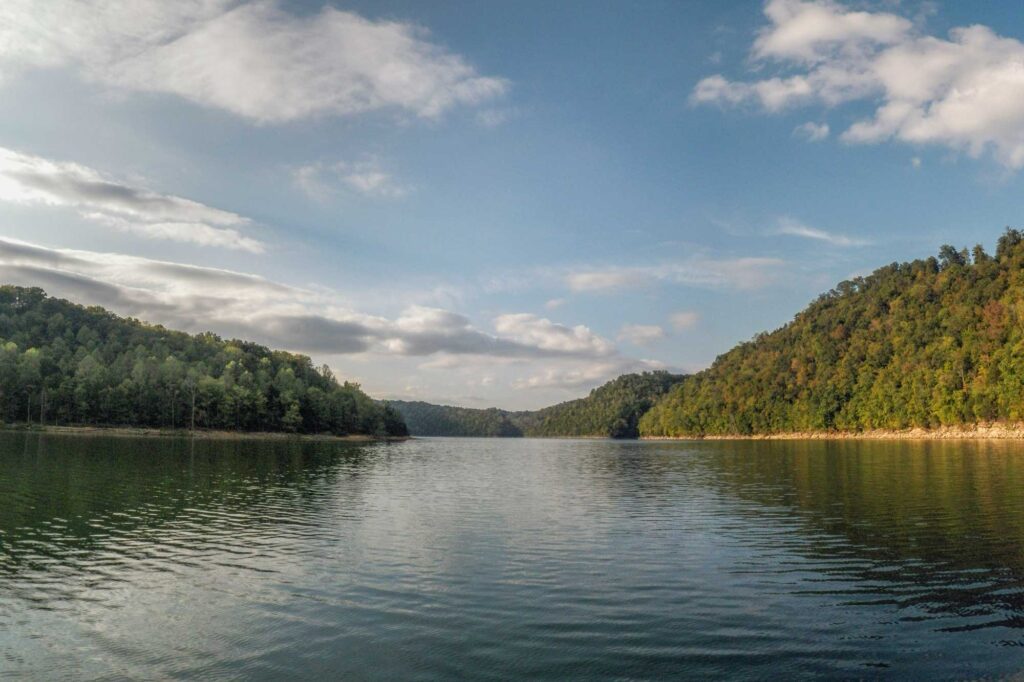
Dale Hollow Lake
Widely acclaimed as one of the cleanest lakes in Tennessee, Dale Hollow straddles the northern border of Tennessee into Kentucky and boasts twelve marinas. Actually a reservoir, Dale Hollow sports over 600 miles of undeveloped shoreline and spring-fed waters.
Originally formed in 1942 by flooding the town of Willow Grove, this lake offers an abundance of cabin rentals, fishing, boating, water skiing, tubing, and wakeboarding.
Dale Hollow Lake is very well known for its smallmouth bass and is host to many fishing competitions.
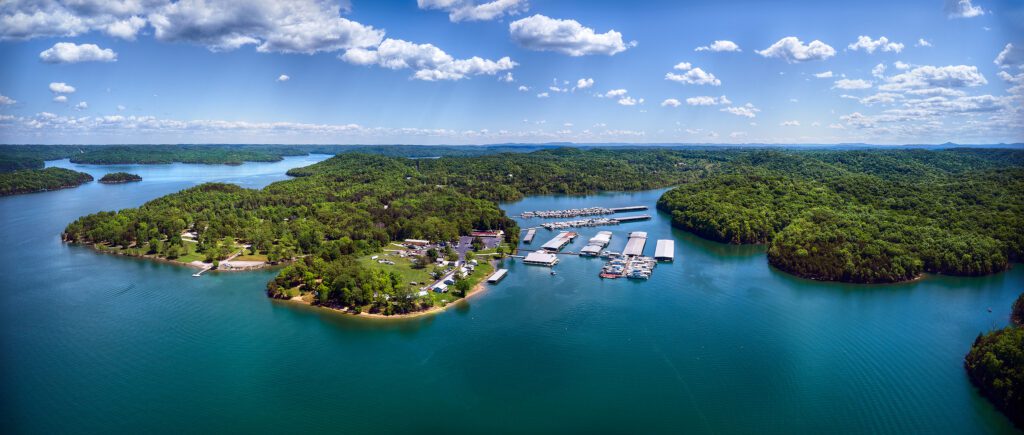
Douglas Lake
Surrounded by the mountains and hills of Sevierville, Dandridge, White Pine, and Newport, Douglas Lake can be found in the foothills of the Great Smoky Mountains and attracts more than 1.7 million visitors every year! Along with year-round activities such as boating, fishing, camping, and swimming, Rankins Bottom area is one of the best birding areas in all of Tennessee.
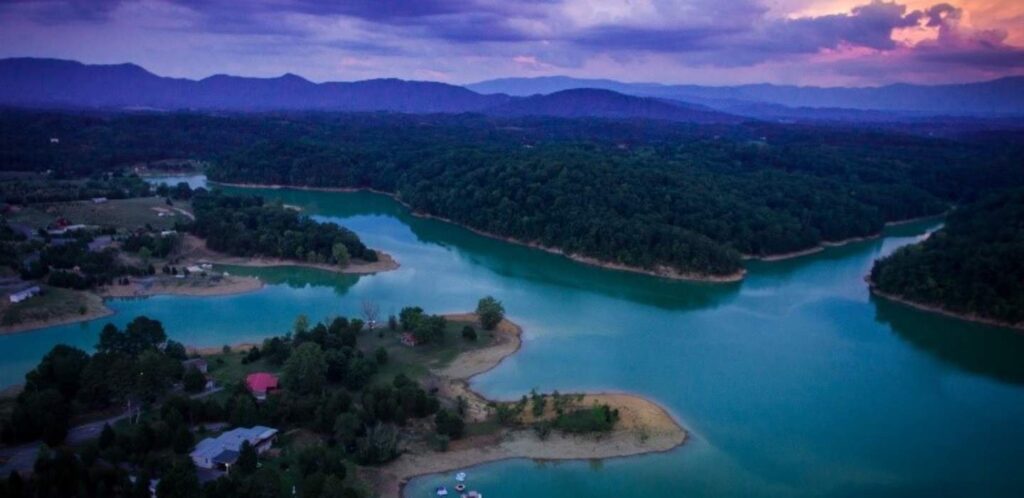
Kentucky Lake
Kentucky Lake is the 25th largest lake in the entire United States (the 7th largest man-made lake) and covers over 160,000 acres from Gilbertsville, Kentucky to Pickwick Dam in Tennessee!
Like many other lakes in Tennessee, it was created by damming the Tennessee River at Gilbertsville in 1944, and spans as much as two miles in width, with a maximum depth of around 70 feet. The size and shape of the lake provide ample space for boating and fishing.
Old Hickory Lake
Old Hickory Lake spans five counties (Davidson, Sumner, Wilson, Trousdale, Smith) in north central Tennessee, and is a 22,500-acre reservoir on the Cumberland River, originally formed by Old Hickory Lock and Dam.
Sitting at an elevation of approximately 445 feet above sea level, Old Hickory Lake has 41 access sites for boats, two campgrounds, and four marinas, providing plenty of opportunities for visitors.
Old Hickory is a very popular destination for all lake life such as fishing, boating, jet skiing, sailing, paddle boarding, kayaking, and swimming.
Nickajack Lake
Found in southeastern Tennessee, and completed in 1967, the Nickajack Dam replaced the Hales Bar Dam and is responsible for what we know today as Nickajack Lake. Along this reservoir, you’ll find barges responsible for transporting important commodities such as grain, soybean oil, petroleum, salt, wood chips, coal, and steel.
The Reservoir extends 46 miles upstream from Nickajack Dam to Chickamauga Dam, and offers an abundance of water and scenery of the Tennessee River Gorge… which some have called “The Grand Canyon of Tennessee”.
Boat-launching ramps and fishing berms are located on both sides of the river below the dam, and a concrete fishing pier with footbridges and a wheelchair ramp is available. TVA camping and picnicking facilities are also available.
Norris Lake
Widely known as one of the TVA’s cleanest lakes, and home to a plethora of water-related recreational opportunities, Norris Lake is a fantastic place to find boating, fishing, skiing, golfing, 4-wheeling, or just relaxing. As an ideal family vacation destination, Norris Lake sports over 21 marinas with a wide variety of hotels, condos, rental homes, campgrounds, houseboats, and floating cabins.
With 21 marinas situated on over 34,000 acres of water, you’ll find a variety of recreational vehicles to rent, such as ski boats, fishing boats, pontoon boats, party barges, and jet skis. As well, there are several restaurants overlooking the lake for theme parties, special events, or live entertainment.
The marina association works together with the Tennessee Valley Authority in order to keep Norris Lake one of the cleanest and most amazing lakes in all of Tennessee.
Percy Priest Lake
Named after Congressman J. Percy Priest, this lake spans over 14,000 acres (~42 miles long), covering portions of Wilson, Rutherford, and Davidson counties. One of the coolest things about this lake is that the entire town of Old Jefferson was demolished in the 1960s in order to create the dam, and Old Jefferson was effectively flooded in order to create Percy Priest Lake.
You’ll find several marinas along this lake, as well as several recreational organizations such as the Percy Priest Yacht Club, Vanderbilt Rowing Club, Vanderbilt Sailing Club, Tennessee Boat Club, and the Nashville Rowing Club.
Located approximately 10 miles east of Nashville (state capital), Percy Priest Lake is located in middle Tennessee and was originally known as the Stewarts Ferry Reservoir. There are just shy of 19,000 acres surrounding this lake, of which, about 10,000 are dedicated to wildlife management.
Pickwick Lake
Pickwick Dam is claimed by the Tennessee Valley Authority (TVA), what is known as Pickwick Lake stretches from the Pickwick Landing Dam to Wilson Dam, and is shared by three bordering states; Tennessee, Alabama, and Mississippi. As the northern portion of the Tennessee-Tombigbee Waterway, this body of water is part of the water transportation route all the way to the Gulf of Mexico!
Pickwick Lake (43,000 acres) is known for excellent sport fishing and known for some of the biggest smallmouth bass and catfish in the entire state. The lakeshore of Pickwick Lake is part of two state parks, the Pickwick Landing State Park as well as Mississippi’s JP Coleman State Park. Enjoy waterfalls? Make sure you check out Yellow Creek Cove, which is home to a beautiful waterfall and a common destination for boaters.
We didn’t tell you this, but there may even be an old rope swing off the top of the waterfall!
Radnor Lake
Definitely one of the smaller lakes in Tennessee, this “natural area” is for those of you looking for wildlife viewing opportunities. Radnor Lake State Park is a destination you cannot miss! The 1,368-acre park is protected and hosts a variety of hiking opportunities (just shy of 8 miles of trails exclusively for hiking, wildlife observation, and photography) as well as environmental education programs. If you’d like to jog, bicycle, or bring your pets, check out the Otter Creek Road trail, and if you would like to take in some beautiful nature on an all-terrain wheelchair-accessible trail, check out The Lake Trail.
Reelfoot Lake
In the northwest corner of Tennessee, Reelfoot Lake boasts over 15,000 acres and is typically noted for its wildlife viewing, fishing, and boating. This lake was created by a series of earthquakes in the early 1800s that caused the Mississippi River to flow backward!
Reelfoot Lake is a flooded forest, which makes its ecosystem incredibly unique and unlike anything else you’ve ever seen in Tennessee! You’ll find Cypress trees rising above the water, as well as submerged Cypress stumps below the surface.
Check out the shoreline and shallow parts of Reelfoot Lake for a stunning variety of aquatic plants, flowers, and wading birds (including eagles!). Nature and wildlife enthusiasts cannot miss this one!
Watauga Lake
Located in the northeastern corner of Tennessee, Watauga Lake was created by the Tennessee Valley Authority (TVA) in 1948 when the Watauga Dam was completed and is called by some “the most beautiful country in the Tennessee River watershed”.
This dam/lake which covers parts of Carter and Johnson counties would have been completed sooner, but construction efforts were interrupted by other World War II building efforts. Like several other dams and lakes in Tennessee, the town of Butler was flooded and now sits at the bottom of Watauga Lake. The “new” town of Butler that now exists was ultimately relocated above the summer pool edge of the TVA reservoir.
Ready to start your new beginning at one of these beautiful lakes?
